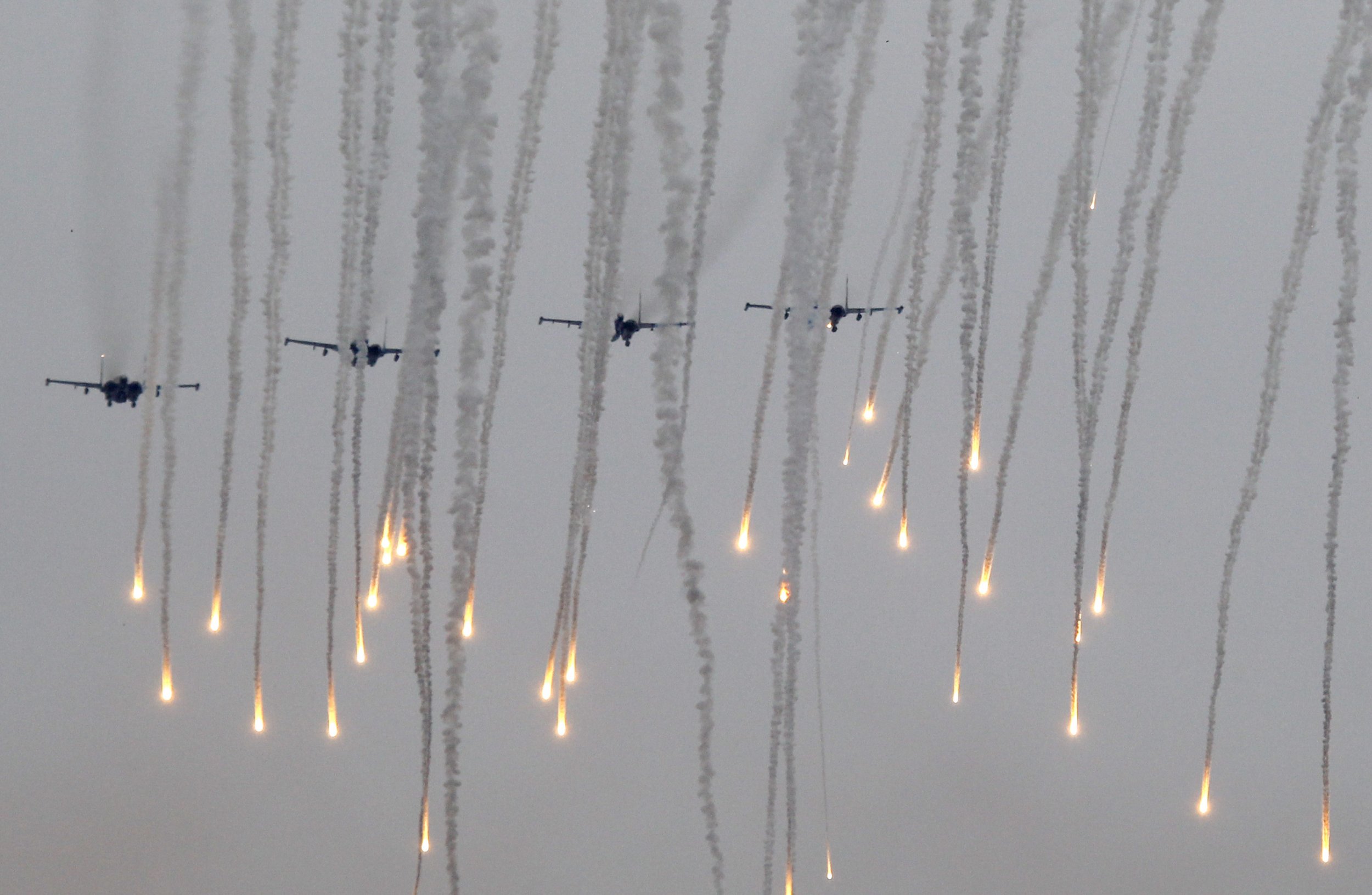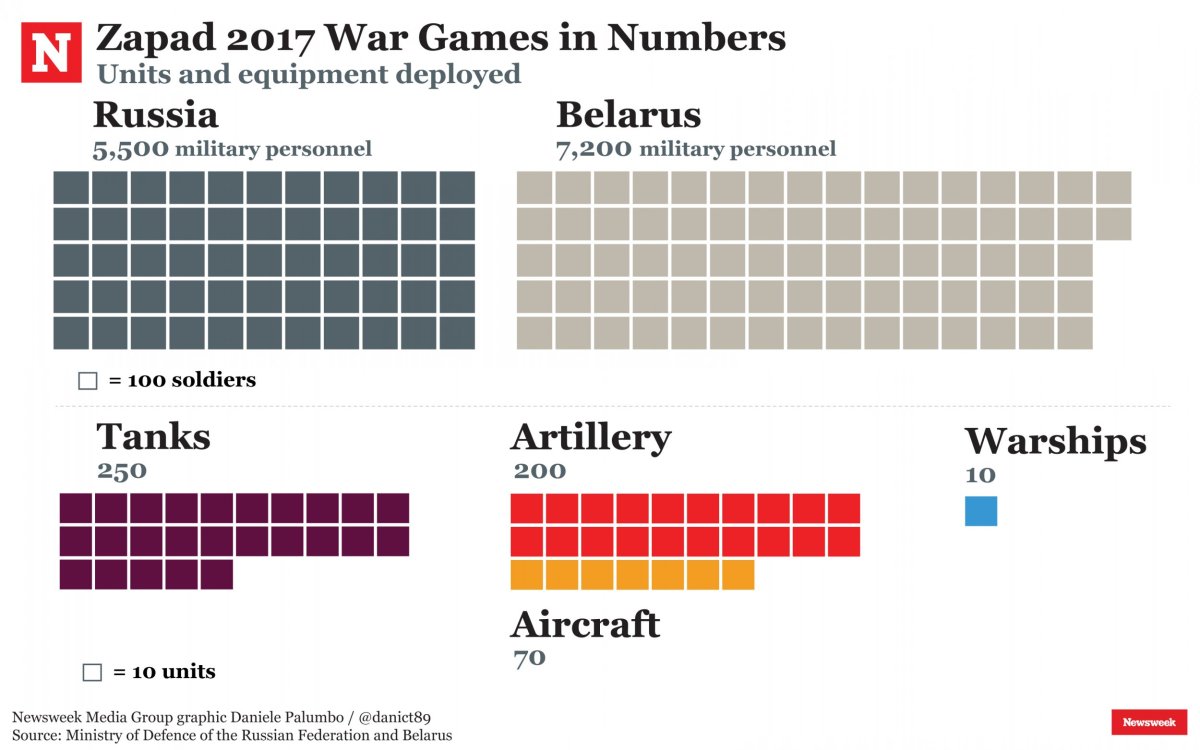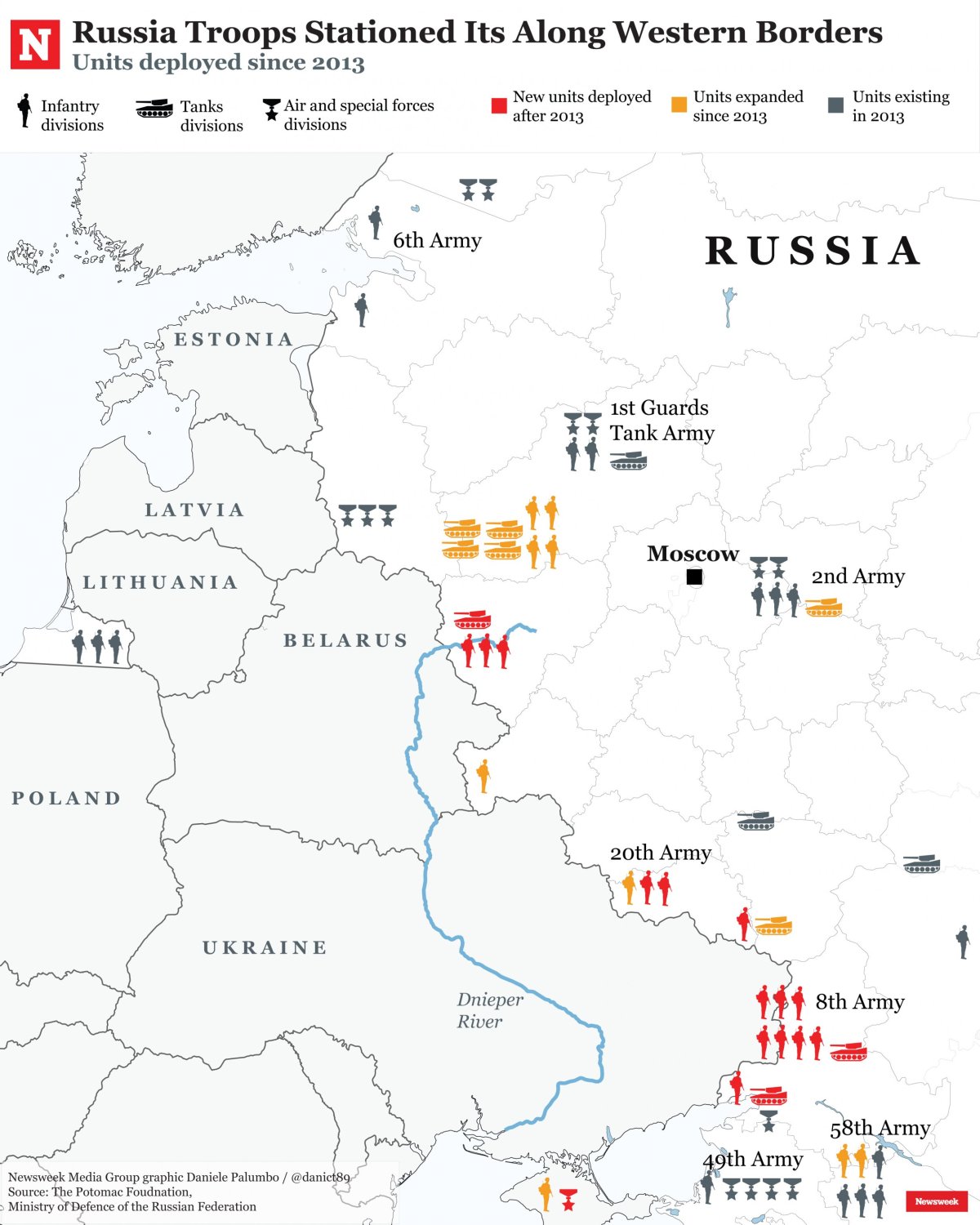
After months of buildup and about a week of official training activity, Russia and Belarus wrapped up their regular joint Zapad (West) war game with some bang, but without any serious confrontation with nearby Western allies.
The closest that the drill appears to have come to a real-world clash was a momentary violation of Lithuanian airspace by two Russian jets, which Moscow said was caused by obstructive weather forcing pilots into a diversion, as opposed to an intent to attack the Baltic state. In fact, local media reports suggest Russians bore the brunt of their own military's fire during Zapad, as a Ka-52 helicopter appeared to fire onto civilian onlookers outside St. Petersburg.
That said, Russia's war game on the fringes of its hypothetical front line with NATO are not without significance. Here is what we learned from Zapad 2017:
Size Matters and Russia Is 'Downright Lying' About It
Russia has lost the trust of the West. After first denying sending the masked troops to Crimea in 2014 that set up the ersatz referendum to join Russia, and then admitting to it months later; after denying it was supporting separatists in east Ukraine whose impressive array of troops and kit has held one of Europe's largest militaries at bay for three years; and after declaring a war on "terror" in Syria that has also punished civilians, medics and the regime's enemies, Russia does not have the benefit of the doubt in Western capitals.

When the Russian defense ministry announced that 12,700 troops would take part in Zapad (only 3,000 of which would be Russian troops deployed in Belarus), European experts began calculating how much higher this number would be in reality. Virtually all concluded with certainty that the figure would be higher than the 13,000 figure—the internationally agreed upon threshold for holding a drill without having to invite foreign observers. Poland and Germany estimated that around 100,000 Russian troops would be mobilized, while Lithuania predicted 140,000 and Ukraine estimated 240,000. At the end of the drill, Ukraine said 120,000 had mobilized.
NATO has concluded that Zapad was "larger" than initially advertised, and independent estimates fall in the middle, at around 70,000 troops, London's Royal United Services Institute reported.
But the huge figures cited by Western governments ahead of the drill were a public relations coup for Moscow, because the Kremlin can now dismiss evidence it overstepped the threshold it set for itself, equating any such assertions to "paranoia" abroad, says Mathieu Boulègue of the Chatham House think tank.

Tomáš Valášek, the former Slovak ambassador to NATO, said earlier this week that it should worry the West that Moscow is "downright lying" about the size of the drill, because in tense political times that makes accidental conflict more likely.
"In the future, there may well be a situation where we want proper monitoring when the tensions between East and West are much higher than they are today," he said during a Politico podcast. "And [when] we don't have that recourse, then it makes everybody jumpy, right?"
A lack of trust and poor communication close to tense borders is a dangerous combination, considering that Russian drills in the northwest have resulted in two serious misfires over the past month alone. The first—a tank missile ricochet—killed one and wounded five.
The casualties were Russian servicemen, so, although tragic, the incident did not become an international one. Any unaccounted-for kit malfunctioning close to a non-allied neighbor that already suspects Russia's motives would mean a larger threat of political crisis.
Russia Tests Its Reinforced Front Line
The last time Russia held a Zapad drill was 2013. This was before its annexation of Crimea, the conflict in Ukraine's east, and a cumulative drop-off in relations with the West that has led to swollen troop sizes on both sides of the NATO-Russia divide in the region. As part of Zapad, Russia had a chance to see its updated front line in action. While the numbers may have been lower, the strategy and purpose were also different, Boulègue says.

"In 2013, Zapad was about big numbers," he says. "The conclusions they drew there and from experience in Crimea and Syria was they didn't need to displace huge numbers for what they wanted to drill this time. Zapad 17 was not about displacement. It was about improving command and control in the Russian military. What we saw was better integration of ground forces with air capabilities, air support and naval forces."
So far, no country has claimed to have observed what Sweden did in 2013 and what Poland did in 2009: a Russian practice air drop, near their territory, of a payload that could theoretically be a nuclear weapon.
"The only time they did anything nuclear threshold-related is when they deployed Yars ICBMs, and that was in Kamchatka," Boulègue says. Capable though the missile may be to hit European capitals, the test was less of a show of force toward any particular nearby state.

The launch was part of a number of drills Russia ran across its territory during Zapad. Its western drills, however, showed an evolution in "the understanding of Russian warfare" after Crimea, Boulègue says.
The drafted drill scenario—a covert, foreign incursion into western Belarus—greatly resembled Russia's tactics in Crimea, while combat involved a series of measures honed in Syria.
"The scenario is the following: Russian airborne units are sent for reconnaissance and to repel the enemy incursion. The army then prepares for ground attack with aerial and naval support. It's less about the nuclear threat, and it is more about rehearsing what they do best," Boulègue says.
Namely, this is artillery-enabled ground assault with air support—so called Anti-Access/Area Denial (A2/AD) capabilities. Despite being billed as a defense drill, the tactics switched midway into an offensive against a conventional military force on its back foot, as opposed to a counterterrorism operation. "The drill was all about NATO, and it really showed," Boulègue says.
The arrival of paratrooper forces relies on help from an assemblage of smart kit, such as radio and electronic capabilities and drones integration—many of which were spotted in the sky during Zapad—as well as testing the speed and reliability of its own data links and communication systems in a scenario where speed, as opposed to bigger numbers, is of the essence.
Uncommon Knowledge
Newsweek is committed to challenging conventional wisdom and finding connections in the search for common ground.
Newsweek is committed to challenging conventional wisdom and finding connections in the search for common ground.
About the writer
I am a Staff Writer for Newsweek's international desk. I report on current events in Russia, the former Soviet Union ... Read more
To read how Newsweek uses AI as a newsroom tool, Click here.








